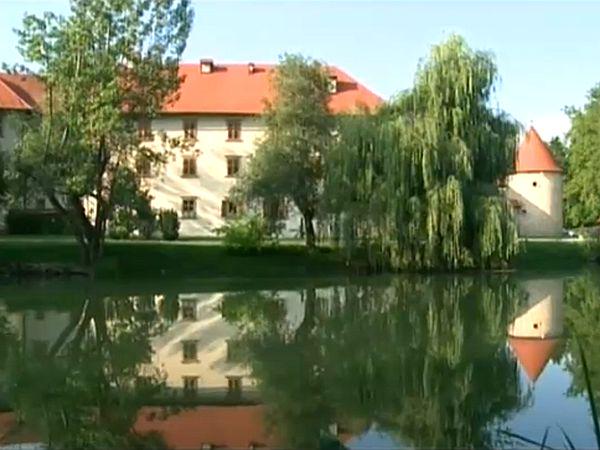
These days, the Otočec Castle is best known as a luxury hotel with a spectacular location on an island in the middle of the Krka River. It attracts famous names from politics, business, and the arts – people who come to enjoy its restful ambiance. The history of the castle, however, is surprisingly turbulent.
The first written mentions of the castle date back to the 13th century. At the time, it was owned by vassals who had pledged allegiance to the influential Bishops of Freising. Originally a Romanesque structure, the castle was soon remodeled in the Gothic style. In its early days, the ownership of the castle changed hands many times. Originally, it wasn’t even on an island. It was sometime in the 14th century that a canal was built, and the castle became completely encircled by the protective waters of the Krka River. In the 15th century, impressive gothic towers were added to the castle’s architecture.
In 1560, General Ivan Lenković took over Otočec. He was certainly one of the castle’s most unusual owners, best known as a commander of Christian soldiers fighting against the Ottomans in modern-day Croatia. Under his rule, refugees from the Turks were settled in the Slovenian Lands, permanently enriching Slovenia’s cultural mix. Lenković and his son also left a lasting mark on the castle, giving it an elegant Renaissance appearance.
In the 17th century, the ownership of the castle passed to Wolff Jakob Sonce. He would eventually be immortalized by the Slovenian writer Ivan Tavčar, who used him as the inspiration for a heroic knight named Janez Sonce. The real-life Sonce was less glamorous, but he did add arched galleries to Otočec and gave the castle its final appearance.
For much of the 19th century and into the 20th century, the castle was owned by the Marghieri de Commadona family, but the outbreak of World War II changed everything. The castle was initially used as military base by the Italian forces; then it was looted and burned down by the Partisans. Even the bridges leading to the island weren’t spared.
The castle’s sawmill and blacksmith shop were never repaired, but unlike many other destroyed castles, Otočec was lovingly restored after World War II. Today, it houses a restaurant and a hotel, which is a part of the prestigious Relais & Chateaux chain and hosts frequent international gatherings. While many visitors are captivated by the castle’s graceful appearance, few are aware of the people and the events that had shaped it over the centuries.

































































